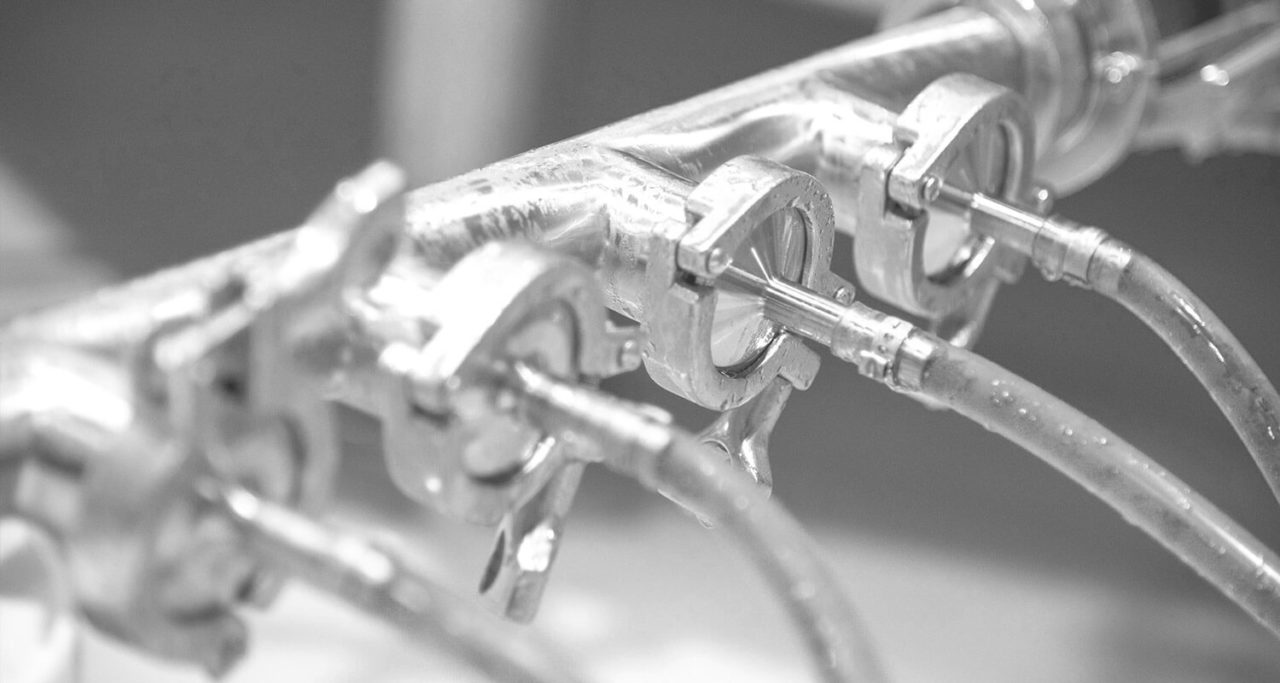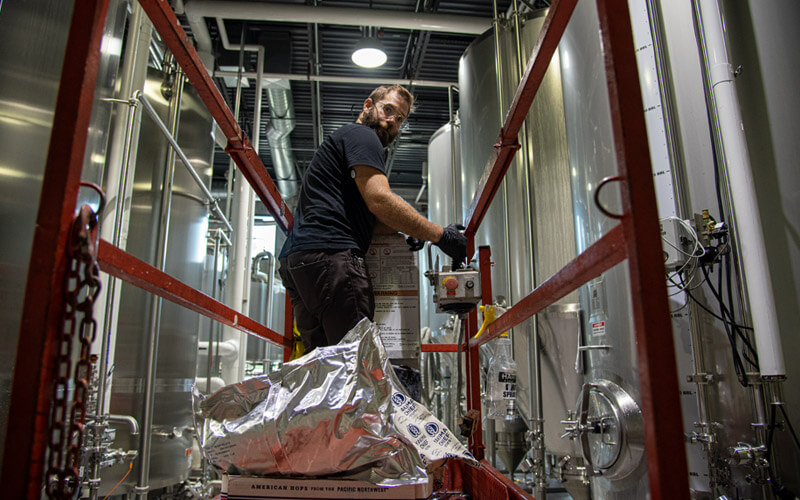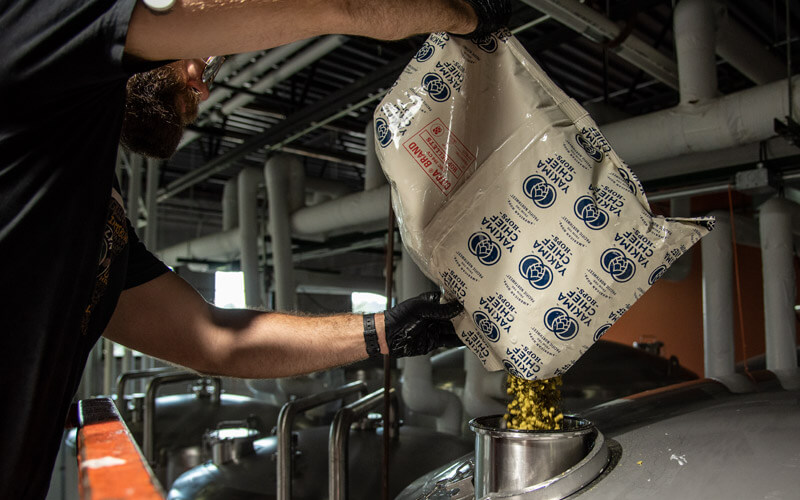Beer is soup… kinda. I mean, it’s definitely cooking. And what would a good chef be without their herbs?
Think of hops like herbs. In cooking, herbs help provide layers of flavor. They can go unnoticed or become a major component. There are many variations, levels of quality, and a variety of forms; fresh, dried, oils, etc. How you use them, when, and in what form all make a difference to the final product.
Let’s understand hops a little better. Hops are a cone-shaped flower (strobile) that grow on twisting vines (bines) up large trellises on farms and in the wild all over the world. Historically, the hop cones were used for their bittering and antimicrobial properties, plus, some other added benefits, like head retention. Now, we enjoy them for the flavor characteristics that each variety and growing region(terroir) can produce. This is all thanks to modern processing that allows the delicate hop compounds to be preserved and used as needed. The process ends in a final product that is:
- Whole – dried and packed whole
- Pelletized – dried, ground, and packed as smaller more efficient pellets
- Cryo – dried, frozen, pulverized, and concentrated
- Distilled – oils/acids/terpenes are extracted for individual use or recombined
- ??? – there are always experiments and new products in the works
When we talk about hops, there are a few typical terms we hear. IBU, triple hops brewed, dry-hopped, double dry-hopped, and wet-hopped. Now, IBUs are a bit misunderstood. It stands for International Bitterness Units and we typically believe this to be a number stating how bitter or how hoppy the beer is. In actuality, it is a calculation of the approximate isomerization of alpha acids, or, how much of the bitter compounds available in hops have been made present in the beer. It does not tell you the quality of aroma or the perceived bitterness, which is better understood subjectively in conjunction with the other aspects of the flavor and mouthfeel of the beer.
So, how do the bitterness, flavor, and aroma of hops find their way into the beer? Think back to one of the national brands’ big slogan in the ’90s. They touted “Triple Hops Brewed” as the unique way they achieve great pilsner taste. Truthfully, that’s the way most beers are made, with three hop additions during the boil. Because many of hops’ aromatic compounds are so volatile, the longer they are in the kettle, the more aroma is driven off. However, time and heat is necessary to develop bitterness. So, we use multiple additions, with flavor and aroma towards the end of the boil. The goal is to achieve a balance between the bitterness and the character of the hops, i.e. hoppiness.
But wait, there’s more. Dry-hopping has become the necessary technique for hoppy beers. As I mentioned, heat will drive off the aromatic compounds of hops, so it makes sense to add them at fermentation temperatures, or what is referred to as the cold-side. But why dry? Although they may be the same hops used on the hot-side, we call them dry because they are being added to the fermenter directly, without boiling. It could make more sense, I know. Especially, when you take into account wet-hops. When the term wet-hops is used, it means the hops have been picked and used fresh, instead of dried and processed, as usual. However, you can dry-hop with wet-hops. It’s best to think of dry-hopping as a process and wet-hops as a form of hops.
Finally, we have what most of us truly appreciate about hops, their complex aroma. Hops contain essential oils, acids, and flavonoids that contribute to aroma. These compounds can produce aromas in the categories of citrus, earthy, pine, floral, and spicy. These compounds are expressed differently in each variety, each region, and in the particular hop cone based on where and when it was picked, how it was processed, and how it was used. These compounds, and our perception of them, can change based on the beer and when it is being enjoyed. Brewers often select hops with the particular quality they want during a hop rub. They are given a sample of hops from a numbered lot and rub it between their hands to release as much of the aroma compounds as possible. At this time, much of the aroma in this form will be different from its contribution to the final beer and it takes experience and practice to understand how it will play out. This is because every compound reacts differently to the process. Some will never become soluble in the beer, some will break down faster than others, and some will change. The process of changing is either a chemical interaction with components of the beer or, what is known as biotransformation, interaction with living yeast still present in the beer. This has been a particular area of interest recently as dry-hopping earlier during active fermentation has become more popular.
Here are some ways hops might express themselves in your favorite styles:
West Coast IPA with Pacific Northwest hops – very bitter with aromas of pine and citrus
Juicy IPA with new types or NZ hops – low bitterness with tropical aromas and orange
Porter with English hops – slightly bitter with an earthy and spicy character
Czech Style Pilsener with Saaz hops – apparent but balanced bitterness with spicy notes
Lambic with aged hops – no bitterness or hop aroma, used for its antimicrobial properties
Maybe hops are more than just herbs. Magic herbs, perhaps? They are a close relative to cannabis… However you look at it, I hope I’ve added some clarity to the subject of hops. The next time you visit your favorite place to purchase a beer and ask them for something hoppy, know that it can mean a lot of different things. Instead, tell them how much bitterness you are looking for and what flavors you enjoy. When you read a menu board and it says dry-hopped, understand that it’s likely to be very aromatic. And if you read a can that says 50 IBU, think of how it relates to the beer inside. Is it a dry pale ale, or a sweet imperial stout?
That’s everything.
…except the detailed and dramatic history of taxation on beer in Europe during the middle ages, the extensive hop breeding and agricultural programs that take years and even decades to come to fruition, the vast and unknown world of the chemistry of hop compounds, and the immense impact of the plant on culture and national and global economies.
Cheers,
James Bigler
Certified Cicerone and Cellarman



